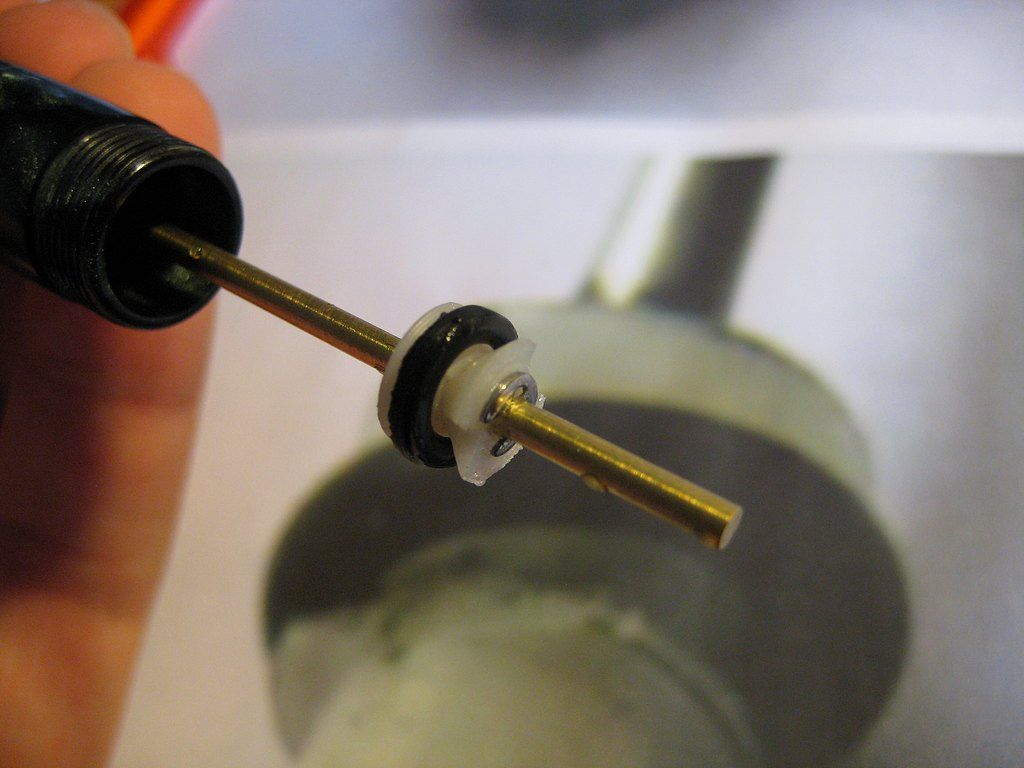 |
| The sliding seal shortly after testing for fit. There was an encouragingly loud pressure change as the O ring shifted position on the Goossens spindle during testing. |
It was too much to hope for a serendipitous discovery of seals that would exactly fit the Kaigelu's barrel "off the shelf". After all, that the stars had aligned in such a way as to reveal everything else - a conveniently shaped motor pulley for the Goossens spindle, a ready supply of 2 mm diameter rods, and of course, the cylindrically barrelled and pre-blindcapped Kaigelu itself - was already bordering on the unlikely.
Anything more would have required a darker covenant; sadly, a scan through Iamblichus' On The Mysteries of the Egyptians, Chaldeans and Assyrians for the necessary invocations proved fruitless, and ultimately my efforts in this endeavour were stymied owing to a general lack of practical direction.
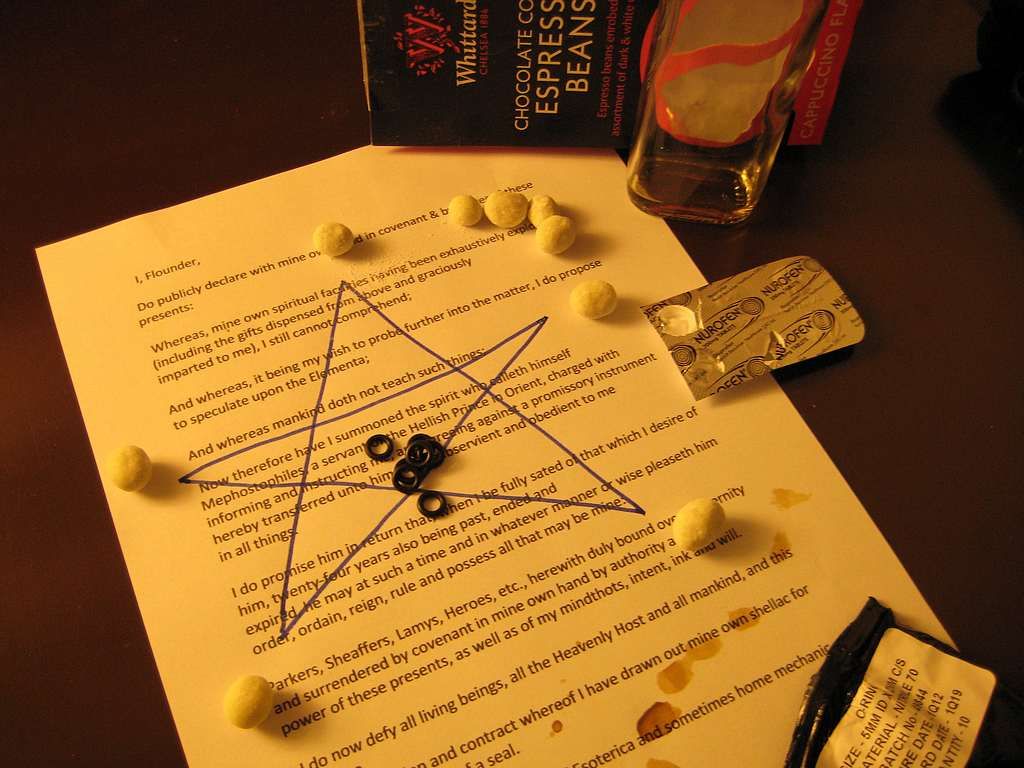 |
| Nothing ventured, no Thing invoked. |
Instead, the path was made clear to me by David Nishimura's mention of restorers grinding fresh cut seals to size while replacing perished gaskets. This was advice that worked out very well for both the stationary "packing" top seal - a Sheaffer Pen For Men point seal - and the sliding seal at the end of the plunger rod, a generic nitrile rubber O ring.
I've never had to grind rubber before, and the whole experience was a happy surprise. I had expected the rubber to stink as it was abraded, the sealing surface to become ragged, and for the work to make a mess, and I was wrong on all counts. You can grind down perfectly workable seals with no such hassles in a couple of minutes.
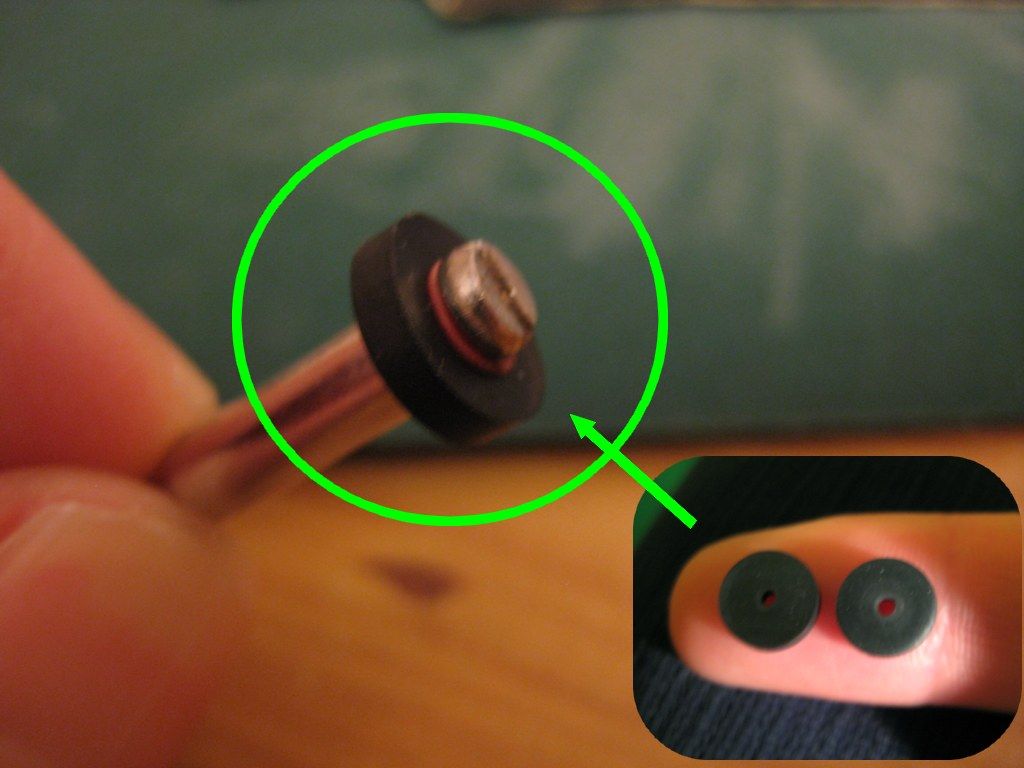 |
| The thicker of the two PFM point gaskets, about to be ground down to fit the Kaigelu's barrel. |
The great expedient of using the PFM gasket as a stationary seal was the perfectly smooth and circular precut centre hole. Similarly, by using a Goossens type spindle, there was no need to cut any kind of centre hole for the sliding seal at the end of the plunger rod. All that was required of me was to set these seals in a mandrel, and spin them against an abrasive. The PFM seal was subjected to two grades of sandpaper and some wet 12000 grit micromesh for this purpose, and took less than a minute to complete, snugly fitting the barrel cavity.
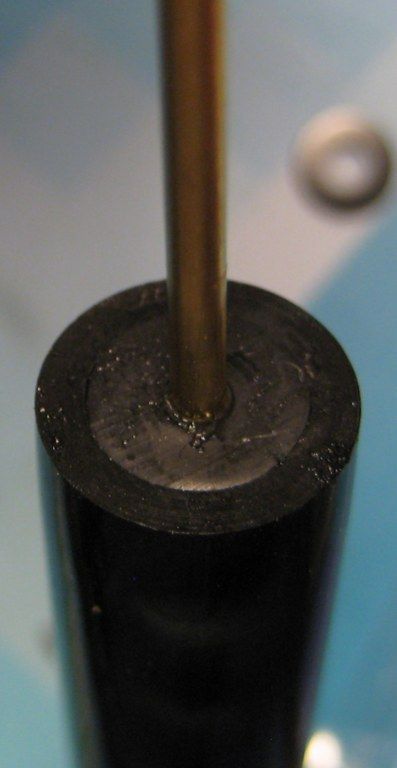 |
| It only took about a minute to grind the PFM gasket down to fit the barrel. |
The sliding seals were more oversize, so took more grinding. These are generic 5mm ID, 2mm C/S (cross section) nitrile O rings and come in a pack of 10. The convoluted arrangement below allowed me to work on two simultaneously - this meant I could get both down to roughly the right size at the same time, then take a crafty chance on grinding down one by a fraction more than the other, and compare the two for fit.
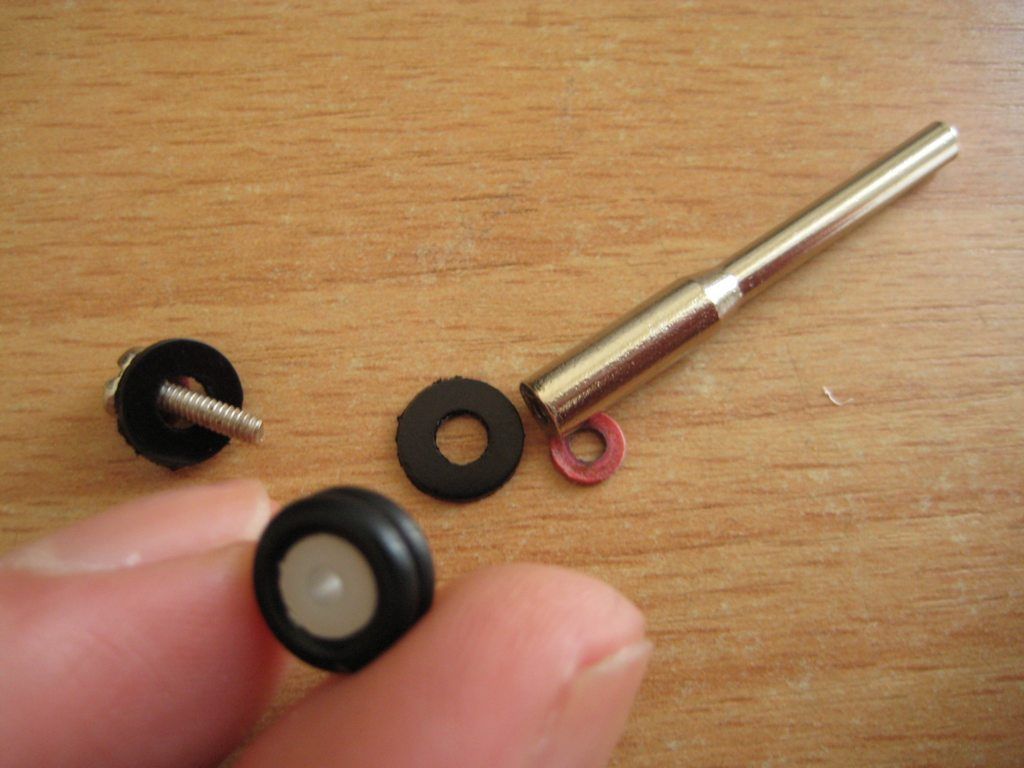 | |
| About to secure a pair of O rings to the mandrel of a mini drill. |
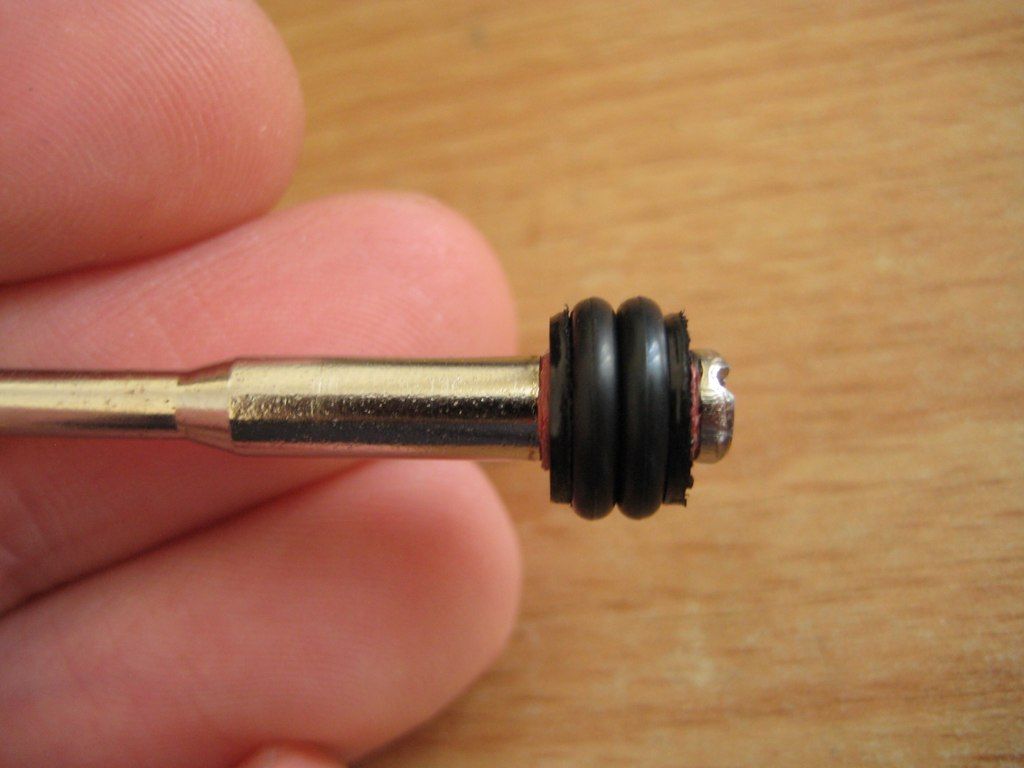 | |
| Like this, do you see? |
As a rough guide to getting the O ring down to size, I found that if it fitted the mouth of barrel with a little resistance, then it was pretty close to perfect.
 |
| The O rings, ready to spin against the coarse and fine sandpaper (in background). |
I learnt a lot from this exercise! It should be handy experience if I get an old Vac-Fill. Rubber seals take very little time, make minimal mess, and no smell to grind down to size. With a wipe of silicon on both to aid assembly, the seals passed a water test. It was interesting to hear the pressure change as the O ring shifted on the Goossens spindle. Great stuff!
Why PFM point seals anyway?
I simply couldn't find any generic rubber seals with the profile needed! Generally speaking there's not much call for a gasket with a very small diameter (< 2mm) hole, and a large outer diameter (let's say about 8mm). I did briefly consider making up an ugly arrangement using a vac-fill packing seal mounted in a rigid cylinder, which would itself be sealed in the barrel, as a fall-back position. The PFM point seals came as a happy deus ex machina escape from all of that.
Now, I'd never actually used Sheaffer's Pen For Men, but my similarly designed Snorkel did offer a clue that this model's point seal gasket was a contender for what I needed. Both pens use a filling tube that extends and retracts through a 'point seal'. Taking a ruler to my Snorkel's tube showed it was comfortably less than 2mm in diameter, guaranteeing a tight fit for the 2mm brass rod I'd chosen for this project. Unlike the svelte Snorkel, I knew the PFM had a reputation for girth, so figured its point seal would have a suitably huge outer diameter. It does.
Next time on Flounder's Mindthots...
So far, we've a plunger rod for our sliding seal, but the freshly tailored stationary seal is still looking for a home. It's time for it to move in with a pair of rigid spacers in a 'Packing Unit' at the end of the barrel! This disparate pile of plastic, rubber and brass parts is about to resemble a functioning plunger filler, so be sure to drop in when your zodiacal occultations and syzygies are most favourable.
Very good article, I think it will help me
ReplyDelete